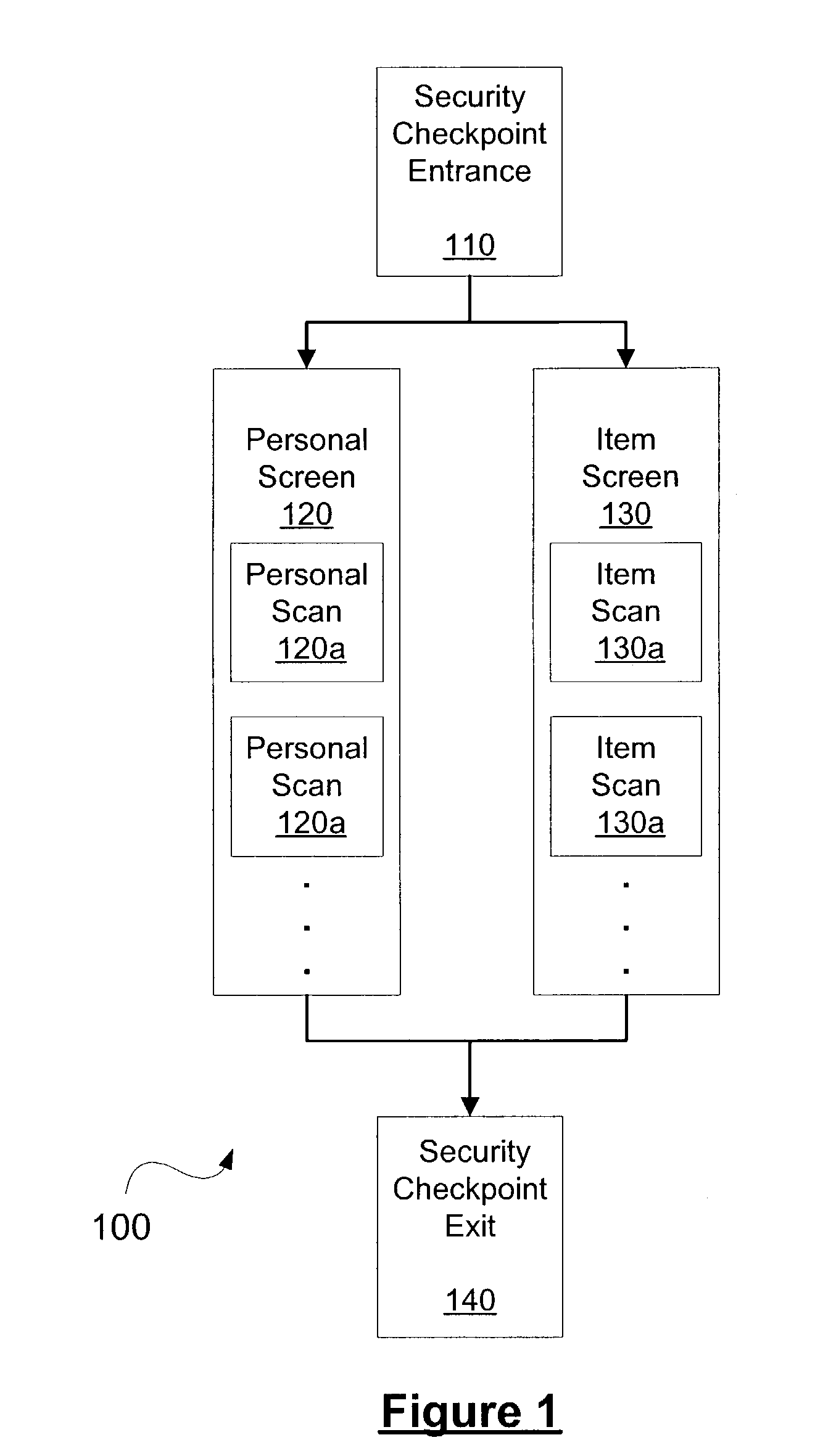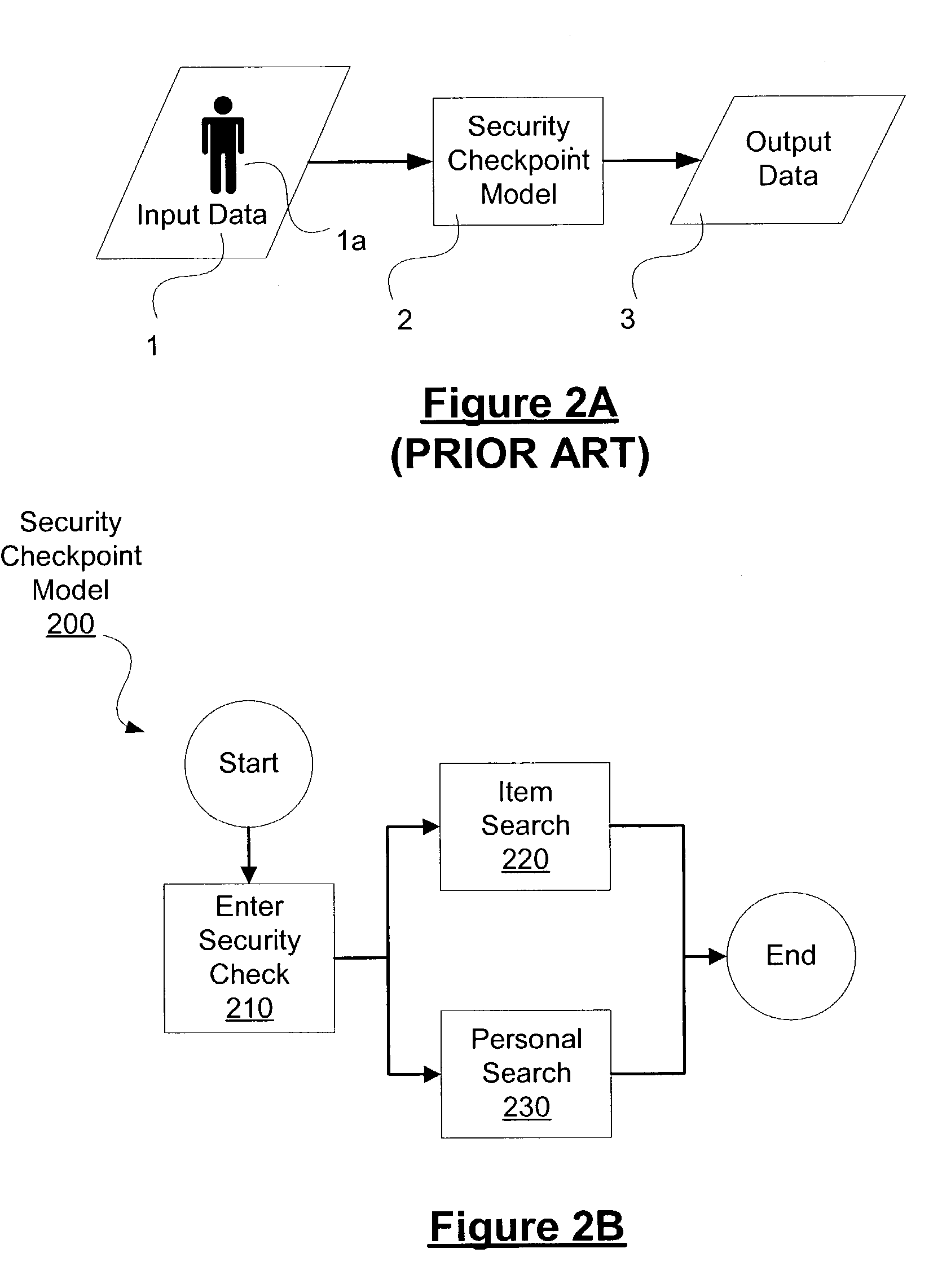Security checkpoint simulation
a security checkpoint and simulation technology, applied in the field of security checkpoint simulation, can solve the problems of time delays, inconvenience caused by additional security measures, and difficult for policy makers to assess the effectiveness of new security measures, and achieve the effect of evaluating the time costs of security measures
- Summary
- Abstract
- Description
- Claims
- Application Information
AI Technical Summary
Benefits of technology
Problems solved by technology
Method used
Image
Examples
example 1
Maintain Desired Service Levels
[0057]In one implementation, the system and method of the present invention may be used to evaluate the number of lanes or security devices needed at a security checkpoint to fulfill desired service levels. In this context, service levels relate to the experience of people passing through the security checkpoint, such as the total process time in the checkpoint or the length of the queue for the processes in the checkpoint. To represent a change in the number of lanes, a user may modify the process times for each of the processes in the security checkpoint. For instance, the maximum process times for each of the processes in checkpoint model 200 may be reduced to reflect an increased number of lanes. Likewise, the maximum process times may be increased to reflect a decrease in the number of lanes.
[0058]In the same way, a user may use the simulation to evaluate changes in the configuration of the security checkpoint. For example, if queue length is the ...
example 2
Changes in Checkpoint Configuration
[0059]In another implementation, the system and method of the present invention may be used to evaluate changes in the checkpoint configuration, such as changes in machinery or personnel. To reflect changes in the machinery or personnel, the process times for processes in the security checkpoint may be adjusted, as described above. Returning to model 200, process times for the substeps of entering the checkpoint 210, screening items 220, and screening people 230 may be adjusted. For example, a new security device for inspecting shoes implemented in step 236 may evaluated by changing the process time for that step. Alternatively, if the personal scanning device used in step 231 is adapted to inspect shoes as well, a separate shoe inspection is unnecessary and the process time for the shoe inspection 236 may be set at zero. Then, a simulation may be repeated to determine the effect of the technology change. In the same fashion, the addition of a new ...
example 3
Changes in Checkpoint Policy
[0060]In another implementation, the system and method of the present invention may be used to evaluate policy changes at the checkpoint. As previously described, changes in the sensitivity of a particular screening device may be modeled changes in the process times associated with that device. Where the policy change affects the relationships of the processes in the security checkpoint, the rules for linking these processes maybe amended. For instance, the processes may be reordered or reconnected as needed to reflect changes in the checkpoint.
[0061]Additionally, the present invention may be used to evaluate more complex policy changes. For instance, a rule restricting the flow of people through the security checkpoint based on queue length of one or more processes may be evaluated. Specifically, the checkpoint may prevent new people from being scanned in step 231 if an excessive queue (i.e., more than three people) forms for resolving personal scan alar...
PUM
 Login to View More
Login to View More Abstract
Description
Claims
Application Information
 Login to View More
Login to View More - R&D
- Intellectual Property
- Life Sciences
- Materials
- Tech Scout
- Unparalleled Data Quality
- Higher Quality Content
- 60% Fewer Hallucinations
Browse by: Latest US Patents, China's latest patents, Technical Efficacy Thesaurus, Application Domain, Technology Topic, Popular Technical Reports.
© 2025 PatSnap. All rights reserved.Legal|Privacy policy|Modern Slavery Act Transparency Statement|Sitemap|About US| Contact US: help@patsnap.com



